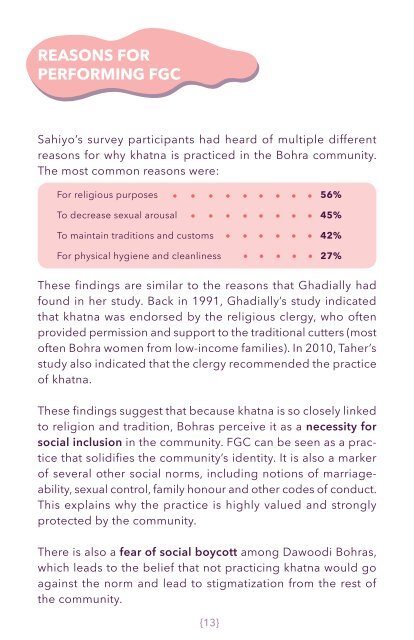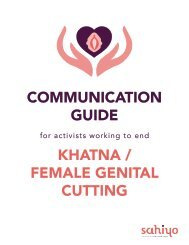Create successful ePaper yourself
Turn your PDF publications into a flip-book with our unique Google optimized e-Paper software.
REASONS FOR<br />
PERFORMING FGC<br />
Sahiyo’s survey participants had heard of multiple different<br />
reasons for why khatna is practiced in the Bohra community.<br />
The most common reasons were:<br />
For religious purposes 56%<br />
To decrease sexual arousal 45%<br />
To maintain traditions and customs 42%<br />
For physical hygiene and cleanliness 27%<br />
These findings are similar to the reasons that Ghadially had<br />
found in her study. Back in 1991, Ghadially’s study indicated<br />
that khatna was endorsed by the religious clergy, who often<br />
provided permission and support to the traditional cutters (most<br />
often Bohra women from low-income families). In 2010, Taher’s<br />
study also indicated that the clergy recommended the practice<br />
of khatna.<br />
These findings suggest that because khatna is so closely linked<br />
to religion and tradition, Bohras perceive it as a necessity for<br />
social inclusion in the community. FGC can be seen as a practice<br />
that solidifies the community’s identity. It is also a marker<br />
of several other social norms, including notions of marriageability,<br />
sexual control, family honour and other codes of conduct.<br />
This explains why the practice is highly valued and strongly<br />
protected by the community.<br />
There is also a fear of social boycottamong Dawoodi Bohras,<br />
which leads to the belief that not practicing khatna would go<br />
against the norm and lead to stigmatization from the rest of<br />
the community.<br />
{13}



